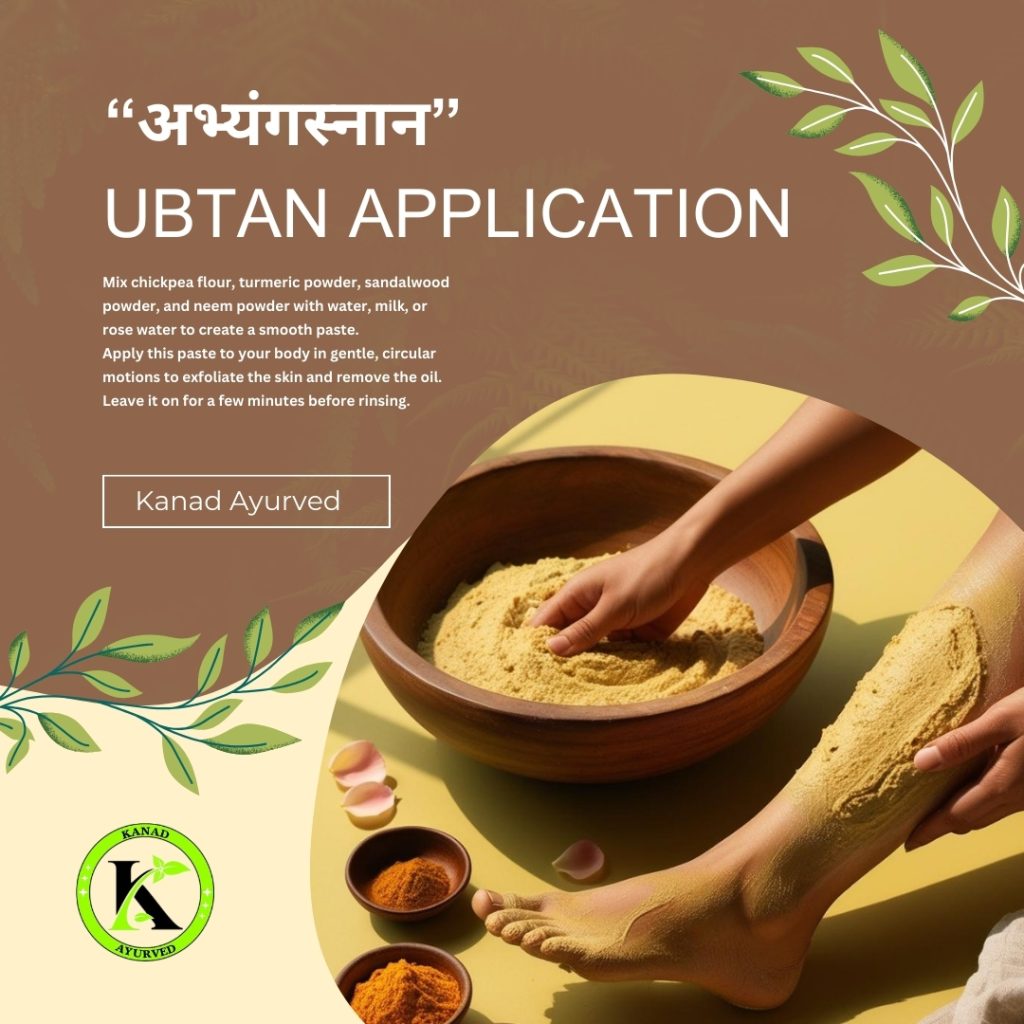Digital Health Integration in Ayurveda: A Focus at the 10th World Ayurveda Congress
The realm of Ayurveda, an ancient system of holistic medicine, is undergoing a significant transformation as digital health tools become integrated into traditional practices. The 10th World Ayurveda Congress (WAC), set to be held from December 12-15, 2024, in Dehradun, will focus on this crucial topic with the theme “Digital Health—An Ayurveda Perspective.” This article delves into the importance, current advancements, potential, and challenges of incorporating digital tools in Ayurveda to make it more modern, accessible, and efficient.
1.The Intersection of Ayurveda and Digital Health
Digital health integration involves the use of technology such as mobile applications, telemedicine, wearable devices, and data analytics to enhance healthcare practices. When applied to Ayurveda, these tools can lead to more effective patient care, broaden the reach of Ayurvedic treatments, and facilitate research and evidence-based practice.
#digitalHealthIntegration, #AyurvedaTechnology, #modernAyurvedicPractices
2.Key Areas of Digital Integration in Ayurveda
Ayurveda’s integration with digital health is revolutionizing how practitioners and patients interact. Below are key areas where digital health is making a profound impact on Ayurvedic medicine.
#a.Telemedicine and Remote Consultations
Telemedicine has become a vital aspect of modern healthcare, allowing practitioners to consult with patients irrespective of their location. For Ayurveda, this is a game-changer as it overcomes geographical barriers, enabling practitioners to reach rural or remote areas where healthcare access is limited.
Benefits: Provides easy access to Ayurvedic consultations, supports continuous care, and allows for quick diagnosis and treatment plans.
#AyurvedaTelemedicine, #remoteAyurvedicConsultations, #virtualHealthcareAyurveda
# b.Mobile Health Apps for Personalized Ayurvedic Care
Mobile applications designed for Ayurveda offer users the ability to track their dosha balance, receive personalized diet and lifestyle advice, and monitor their health using Ayurvedic principles.
Popular Apps : Platforms like Jiva Ayurveda and NirogStreet are examples of how mobile technology is bringing Ayurveda into the digital age.
Advantages: Facilitates self-monitoring and provides access to a wealth of educational content on Ayurveda.
#AyurvedicMobileApps, #personalizedHealthApps, #doshaTracking
#c.AI and Machine Learning in Diagnostics
Artificial Intelligence (AI) and Machine Learning (ML) are being used to enhance diagnostic capabilities in Ayurveda. These technologies can analyze vast amounts of patient data to identify patterns and predict health trends, leading to more personalized treatment plans.
Potential: AI tools can detect early signs of dosha imbalances, offering practitioners a way to intervene before conditions become severe.
#AIAyurvedicDiagnostics, #machineLearningInAyurveda, #predictiveAyurvedicAnalysis
#d.Wearable Technology for Ayurvedic Monitoring
Wearable health technology like fitness trackers and smartwatches now come with the ability to monitor heart rate, sleep patterns, stress levels, and more. Integrating this data into an Ayurvedic treatment plan allows practitioners to tailor interventions based on real-time health metrics.
Use Cases: Patients with chronic conditions such as arthritis or insomnia can receive more personalized care as their health data is continuously monitored.
#wearableTechAyurveda, #realTimeHealthMonitoring, #AyurvedicWearables
3.Benefits of Digital Health Integration in Ayurveda
Integrating digital tools into Ayurveda brings numerous advantages that benefit both practitioners and patients.
#Enhanced Patient Education and Engagement
Digital tools make it easier for patients to learn about Ayurvedic practices , diets, and lifestyle modifications. Interactive platforms can engage users through educational videos, quizzes, and personalized content, increasing awareness and adherence.
#AyurvedicEducation, #patientEngagement, #digitalAyurvedicLearning
# Improved Accessibility and Reach
The global reach of digital health solutions ensures that Ayurveda is no longer limited to traditional settings. Teleconsultations and mobile apps can help spread Ayurvedic knowledge and treatments worldwide, making them accessible to a more extensive range of people.
#globalAyurveda, #digitalAccessibility, #AyurvedaWorldwide
#Data-Driven Research for Evidence-Based Practice
One of the most significant benefits of digital integration is the ability to gather and analyze large datasets. This paves the way for evidence-based Ayurvedic research , where treatments can be scientifically validated and optimized.
Examples: Digital platforms that compile case studies and treatment outcomes to showcase the efficacy of Ayurvedic interventions.
#evidenceBasedAyurveda, #dataDrivenResearch, #AyurvedicCaseStudies
4.Challenges of Integrating Digital Health with Ayurveda
Despite the promising advancements, there are several challenges that need addressing to ensure the seamless integration of digital health in Ayurveda.
#Ensuring Authenticity and Quality
With the digital space flooded with health-related apps and platforms, maintaining authenticity and adhering to traditional Ayurvedic values is critical. Misinformation can easily spread, affecting the credibility of Ayurvedic practices.
#authenticAyurveda, #qualityControlInHealthApps, #traditionalValuesAyurveda
#Data Privacy and Security Concerns
With the rise of digital platforms collecting sensitive health data, ensuring data privacy and complying with regulations like GDPR or local data protection laws is essential for maintaining patient trust.
#AyurvedaDataPrivacy, #secureAyurvedicPlatforms, #healthDataSecurity
#Bridging Traditional Practices with Modern Technology
Balancing the integration of traditional Ayurvedic practices with modern digital solutions can be challenging. The goal is to enhance Ayurveda without diluting its foundational principles.
#modernizingAyurveda, #bridgingTraditionWithTech, #AyurvedaInTheDigitalAge
5.Digital Tools Elevating Ayurvedic Practices
The use of digital tools is not just a trend but a necessity in today’s tech-driven world. Here’s a closer look at some of the most impactful tools being used in Ayurveda:
#a.Dosha Analysis and Tracking Apps
Apps designed to assess and monitor dosha imbalances help users maintain balance through lifestyle and dietary recommendations.
Examples: Apps like Dosha Guru and Ayurvedic Daily Routines provide users with insights based on their body constitution.
#doshaApps, #AyurvedicTrackingTools, #balanceYourDosha
#b. Interactive E-learning Platforms
E-learning platforms are empowering both students and practitioners to learn about Ayurvedic anatomy, treatment methods, and herbs . These courses offer video tutorials, quizzes, and certification programs.
#AyurvedaElearning, #AyurvedicCoursesOnline, #digitalAyurvedaTraining
6.Case Studies Highlighting Success in Digital Ayurveda
# Case Study1: Ayushman Bharat Digital Mission
The Ayushman Bharat Digital Mission has successfully integrated digital health solutions to facilitate seamless virtual consultations and treatment plans in Ayurveda. This mission has connected patients with practitioners nationwide, ensuring timely and effective care.
Impact: Reduced wait times, increased accessibility, and improved patient outcomes.
#AyushmanBharat, #AyurvedicTeleconsultation, #digitalAyurvedicCare
#Case Study 2: Integration of Wearable Tech in Ayurvedic Sleep Therapy
Wearable devices that monitor sleep patterns have been integrated into Ayurvedic sleep therapy programs. The real-time data allows practitioners to adjust herbal supplements and lifestyle advice based on sleep quality and patterns.
Results: Enhanced effectiveness in treating insomnia and other sleep disorders.
#AyurvedicSleepTherapy, #techInAyurveda, #wearableSleepDevices
7.The Role of the 10th World Ayurveda Congress in Promoting Digital Health
The 10th World Ayurveda Congress (WAC) in Dehradun will be a landmark event that focuses on exploring how digital health can be seamlessly integrated into Ayurveda. This congress aims to:
Highlight successful case studies and technological innovations in Ayurveda.
Provide a platform for tech developers, Ayurvedic experts, and policymakers to discuss collaboration.
Offer workshops and seminars on the best practices for adopting digital health tools.
#WAC2024, #AyurvedaAndTechnology, #AyurvedaCongressDehradun
8.Future Trends in Digital Ayurveda
#Blockchain for Secure Data Management
Blockchain technology can be utilized for the secure management of patient data, ensuring that records are tamper-proof and transparent. This can help create a comprehensive history of patient treatment and responses.
#blockchainInAyurveda, #securePatientData, #AyurvedicRecords
#Virtual Reality (VR) for Enhanced Learning
Virtual Reality can transform how students and practitioners learn Ayurveda by offering immersive training experiences. This can include virtual anatomy tours, treatment demonstrations, and simulations of different dosha conditions.
#VRAyurveda, #digitalLearning, #AyurvedicTrainingVR
#AI-Based Predictive Analysis
The future of Ayurveda will likely see AI tools that can predict dosha imbalances and recommend preventive measures before the onset of illness.
#AIAyurveda, #predictiveAyurvedicTools, #preventiveHealthCare
9.Recommendations for Ayurvedic Practitioners Embracing Digital Health
# Invest in Digital Literacy
Practitioners should aim to become digitally literate to use tools effectively. This includes understanding how to use telemedicine platforms, patient management software, and data interpretation for better treatment plans.
#AyurvedicPractitionerDigitalSkills, #telemedicineTraining,
#digitalAyurvedaPractice
# Build Collaborations with Tech Experts
Partnering with technology developers can help create user-friendly, accurate, and efficient digital tools that adhere to Ayurvedic principles.
#AyurvedaTechPartnerships, #developingHealthApps, #AyurvedicTechInnovation
#Maintain Ethical Standards
As digital health grows, so do ethical considerations. Practitioners should ensure patient confidentiality, provide accurate information, and maintain transparency in digital interactions.
#ethicalAyurvedicPractice, #digitalHealthEthics, #responsibleAyurvedicCare
10.Benefits for Patients: What Digital Ayurveda Means for Them
For patients, the integration of digital health into Ayurveda means easier access to consultations, personalized care, and ongoing support through mobile apps and telemedicine. Patients can enjoy the benefits of continuous monitoring, real-time consultations, and the ability to make informed decisions based on personalized health data.
#AyurvedicPatientBenefits, #digitalAyurvedicSupport, #personalizedAyurvedicCare
Here’s an expanded version of the article focusing on Artificial Intelligence (AI) & Ayurveda, Digital Health – Ayurveda Perspective, and Ayurveda & Wellness with added details and insights:
Artificial Intelligence (AI) & Ayurveda: Revolutionizing Ancient Wisdom
The fusion of Artificial Intelligence (AI) with Ayurveda is paving the way for a new era in personalized medicine. AI, known for its ability to analyze complex data sets, provides unmatched potential in diagnosing, predicting, and recommending tailored treatments based on patient-specific information. When combined with the timeless principles of Ayurveda, this synergy creates a robust platform for enhancing patient outcomes and fostering preventive care.
#The Role of AI in Ayurvedic Diagnostics
AI technologies such as machine learning (ML) and natural language processing (NLP) can be used to interpret patient data, identify underlying patterns, and predict health outcomes. For Ayurveda, this means more accurate dosha analysis and tailored health plans for individuals. Traditional diagnostic methods, which rely on an experienced practitioner’s interpretation of a patient’s physical, mental, and emotional states, can now be supplemented by AI to provide deeper insights and consistency in diagnostic outcomes.
Examples: AI-driven tools can help identify imbalances in Vata, Pitta, and Kapha through data collected from patient health records, lifestyle habits, and biometric data.
#AIAyurveda, #AyurvedicAIIntegration, #digitalDiagnosticsAyurveda
#AI in Personalized Treatment Plans
Personalized medicine (PM) , a core domain of Ayurveda, becomes significantly more potent when supported by AI algorithms. These algorithms can analyze patient profiles and past treatment responses to recommend personalized dietary and herbal interventions.
Potential: AI can propose treatment plans that align with an individual’s prakriti (body constitution), lifestyle, and seasonal changes, ensuring that Ayurvedic treatment adapts dynamically to a patient’s needs.
#AI-Powered Patient Engagement
The use of AI chatbots and virtual assistants in healthcare has made its way into the realm of Ayurveda. AI-driven apps can answer patient queries about Ayurvedic practices, suggest home remedies, and offer guidance on daily health routines.
#AIChatbotsInAyurveda, #AyurvedicPatientSupport, #virtualAyurvedicAssistant
Digital Health – An Ayurveda Perspective
Digital health refers to the intersection between technology and healthcare, encompassing everything from wearable technology , telehealth , mHealth apps , electronic health records (EHRs) , and electronic medical records (EMRs) , to the broader application of personalized medicine (PM) . This integration is becoming essential for the modern practice of Ayurveda.
#The Rise of Digital Health in Ayurveda
Over the past decade, the world has witnessed a significant shift toward digitalization , a transformation accelerated by the COVID-19 pandemic. The crisis highlighted the importance of digital health solutions such as online consultations, remote patient monitoring tools, and symptom-checker apps. For Ayurveda, this shift opens new avenues for expanding its reach and effectiveness.
#digitalAyurveda, #AyurvedaTelehealth, #AyurvedicRemoteConsultation
# Key Technologies Driving Digital Health in Ayurveda
1.Wearable Technology: Wearables that monitor heart rate, sleep quality, and stress levels can integrate seamlessly with Ayurvedic treatments, allowing practitioners to adapt therapies based on real-time data.
2.Mobile Health (mHealth) Apps : Apps tailored for Ayurveda can provide users with daily wellness tips, dinacharya (daily routine) guidelines, and reminders for herbal supplement intake.
3.EHRs and EMRs: Digital records improve the quality of care by allowing practitioners to access a patient’s medical history, ensuring that treatments consider prior conditions and treatments.
# Personalized Medicine and Ayurveda
Personalized medicine (PM) has been an intrinsic part of Ayurvedic practice for centuries, with treatment plans designed according to an individual’s unique constitution. Digital tools and AI have amplified this concept, enabling real-time data collection and patient monitoring. This ensures that treatments evolve with the patient’s changing conditions, adhering closely to the Ayurvedic philosophy of dynamic balance.
#personalizedAyurveda, #mHealthAyurveda, #AyurvedicPatientCare
Enhancing Patient Care with Digital Health Innovations
The integration of digital health tools in Ayurveda enhances patient care through improved engagement and accessibility . Features such as interactive health tracking, teleconsultation platforms, and AI-driven recommendations empower patients to take a more active role in their well-being.
#AyurvedicHealthTech, #digitalPatientEngagement, #AyurvedicTelemedicine
Challenges and Ethical Considerations
While digital health tools offer significant benefits, their integration comes with challenges:
Authenticity and Quality: Ensuring that digital platforms maintain the authenticity of Ayurvedic practices.
Data Privacy: Protecting patient information and complying with regulations such as GDPR is crucial for maintaining trust.
Tradition & Technology Together “TTT”: The risk of diluting Ayurvedic principles while adapting to modern tools must be carefully managed.
#AyurvedicTechChallenges, #ethicalAyurveda, #AyurvedaDataSecurity
Digital Health Solutions: Innovations and Impact
# Telehealth and Telemedicine in Ayurveda
Telehealth has become an essential part of modern healthcare, especially after the COVID-19 pandemic, which highlighted its potential. Ayurvedic teleconsultation platforms enable practitioners to reach a wider audience, offering advice and treatment plans to patients from all corners of the globe.
Benefits: Telemedicine reduces barriers to accessing Ayurvedic care, offers convenience, and helps maintain continuity of care.
#AyurvedaTeleconsultation, #AyurvedicTelehealth, #remoteAyurvedaConsultation
# mHealth Apps and Wearable Technology
Mobile apps and wearable devices have revolutionized how individuals monitor their health. Apps that help track dietary habits, provide dinacharya reminders, and suggest lifestyle adjustments based on real-time data are gaining traction. Wearable technology helps in the ongoing assessment of key health parameters, which can be linked to Ayurvedic insights for improved treatment and preventive care.
#wearableAyurveda, #AyurvedicHealthApps, #realTimeAyurvedicMonitoring
AI-Powered Insights for Preventive Care in Ayurveda
AI’s ability to process vast amounts of data can be a game changer for preventive care in Ayurveda. By analyzing lifestyle patterns, diet, and biometrics, AI can provide personalized recommendations for maintaining balance in the body’s doshas.
Potential Use : AI can alert users to potential health risks related to dosha imbalances before they manifest into disease, fulfilling Ayurveda’s core aim of prevention.
#preventiveAyurveda, #AIinAyurveda, #predictiveAyurvedicTools
The 10th World Ayurveda Congress (WAC): A Pivotal Event
The 10th World Ayurveda Congress in Dehradun will focus on integrating digital health into Ayurveda, acknowledging the importance of merging traditional and modern approaches. This congress will be a platform for discussions on leveraging digital tools to maintain Ayurvedic authenticity while embracing innovation.
Key Discussions : Case studies showcasing digital success, workshops on developing mHealth apps for Ayurveda, and panels on ethical practices in digital health.
#WorldAyurvedaCongress2024, #digitalAyurvedaFocus, #AyurvedaTechCongress
Future Trends and the Path Forward
#The Role of Blockchain in Ayurveda
Blockchain technology can be harnessed for secure, tamper-proof management of patient data and treatment histories, improving transparency and trust in digital Ayurveda.
#blockchainAyurveda, #AyurvedaDataManagement, #secureAyurvedicRecords
#Augmented Reality (AR) and Virtual Reality (VR) in Ayurvedic Education
AR and VR technologies can transform how Ayurvedic students and practitioners learn, providing immersive experiences for better understanding of anatomical structures and dosha pathways .
#VRAyurvedaEducation, #ARinAyurveda, #AyurvedicTrainingTech
Conclusion: Embracing the AI-Era of Ayurveda
The integration of digital health solutions marks a transformative chapter in the evolution of Ayurveda. The 10th World Ayurveda Congress in Dehradun is set to pave the way for future innovations by emphasizing how modern technology can seamlessly merge with ancient Ayurvedic wisdom. As Ayurveda steps into the digital age, it carries its roots forward, embracing tools like AI, wearable technology, telehealth, and other digital innovations that position it not only as a traditional holistic health practice but also as a modern, proactive healthcare solution.
The journey ahead involves balancing authenticity with technological advancement, ensuring that Ayurveda maintains its integrity while becoming more globally accessible and effective. This integrated approach promises enhanced patient outcomes, evidence-based research, and a broader reach, making Ayurveda a relevant and indispensable part of contemporary healthcare.
#futureOfAyurveda, #AyurvedaAndDigitalHealth, #AyurvedicTechFuture, #digitalAyurvedaInnovation, #AyurvedaInModernHealth






































































































